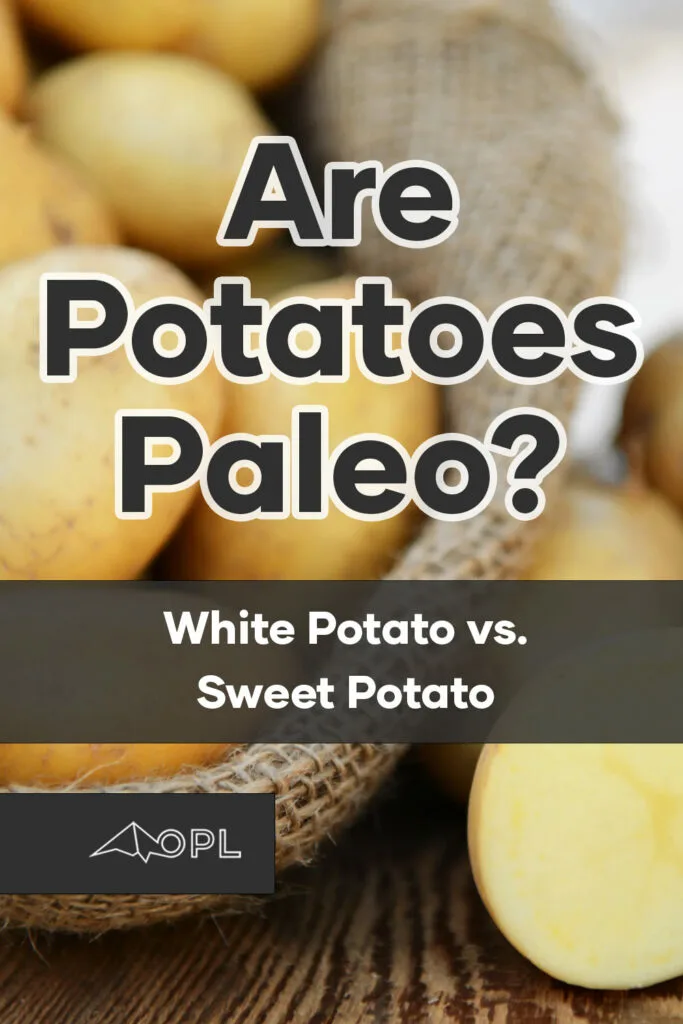If you’re NOT on a low carb diet, it’s okay to eat potatoes (with some considerations). Understand why white and sweet potatoes are treated the way they are on the Paleo Diet. This is the definitive guide to: white potatoes, sweet potatoes, yams, and cassava.
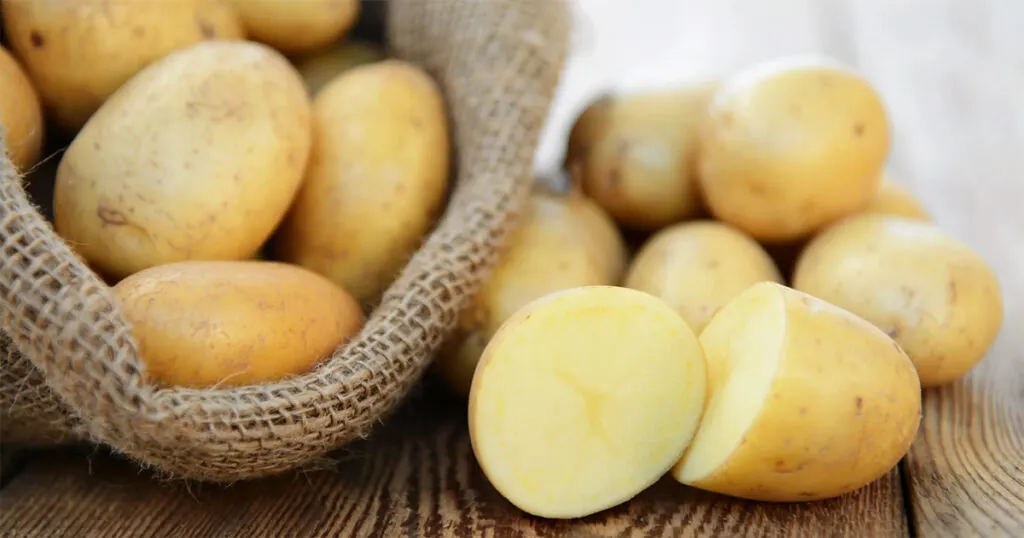
When were white potatoes first consumed?
They’re often referred to as Irish potatoes, originated in the Andes area of South America and were initially cultivated by local inhabitants around 8000 BC. Nevertheless, their consumption outside of South America was not widespread until after the Spanish conquest of the region in the 16th century. At that time, the Spanish exported them to Europe where they quickly turned into a standard food item for many nations. Today, they’re harvested and eaten everywhere globally.
When were sweet potatoes first consumed?
They’re a type of root vegetable that is native to Central and South America and has been cultivated for thousands of years. They were an important food source for many indigenous peoples in the Americas and were a staple in the diets of the Aztecs and Incas.
They were first introduced to Europe by Spanish conquistadors in the 16th century, and they quickly became a popular food in Europe and other parts of the world. Today, they’re widely grown and consumed in tropical and subtropical regions around the world and are an important source of nutrition for millions of people.
White Potatoes Paleo
The paleo diet is based on the idea of eating the same types of foods that our paleolithic ancestors ate. It includes meats, fish, vegetables, fruits, nuts, and seeds. Basically, whatever was available on a regular basis. Today, there’s debate on whether white potatoes are considered paleo or whether potatoes are even healthy.
Are white potatoes safe on the paleo diet?
We consume them often and consider them to be perfectly safe and a delicious addition on the Paleo diet. They may be considered paleo-friendly. We eat them on OUR version of Paleo and no, we’re not hunter-gatherers. And that’s okay.
Just because a specific food doesn’t TECHNICALLY fit a certain definition or diet protocol, don’t let it scare you. It’s better to look at the bigger picture. Really, when you boil it all down, we’re not as concerned with the concept of “what did the Paleolithic man eat”, we view the Paleo diet as an elimination diet and we view them as perfectly fine to consume on the Paleo diet.
They’re really not that bad unless you have insulin resistance and are seriously trying to reverse it and become insulin sensitive.
My opinion: potatoes are Paleo and you can safely add potatoes on the Paleo diet. View our comprehensive Approved Paleo Foods List
Are white potatoes safe on a Keto diet?
No, you cannot eat regular servings of them on a ketogenic diet and expect to easily produce ketone bodies. The ketogenic diet, or keto diet for short, is a high-fat, low-carbohydrate diet that is designed to help the body enter a state of ketosis, in which it begins to burn fat for fuel instead of carbohydrates. Potatoes are considered to be a high glycemic index food. Check out this list of Approved Keto Foods
If eating carbohydrates are okay on your diet, a potato may help you enjoy dinner … a little more. If you’re trying to encourage your liver to produce Ketones, potatoes are not your friend.
Where are white potatoes on the glycemic index?
The glycemic index (GI) is a scale that measures how quickly a food raises blood sugar levels. Foods that are high (GI 70 or above) are absorbed and digested quickly, which can cause a rapid rise in BS levels. Foods that are low (GI 55 or below) are absorbed and digested more slowly, which can cause a slower rise in BS levels.
They’re generally considered to be a high-glycemic-index food, with a GI of 70 or above. This means that they are absorbed and digested quickly and can cause a rapid rise in BS levels.
Exploring the Nutritional Value of White Potatoes
They’re a good source of several important nutrients, including:
- Vitamin C: a good source of vitamin C, which is an important antioxidant that helps to protect cells from damage.
- Potassium: a good source of potassium, which is an important mineral that helps to regulate blood pressure and heart function.
- Fiber: contain a moderate amount of fiber, which is important for maintaining a healthy digestive system.
- Vitamin B6: good source of vitamin B6, which is important for brain function and the metabolism of proteins and carbohydrates.
- Iron: contain a small amount of iron, which is important for carrying oxygen to the body’s cells.
Unlocking the Hidden Benefits
When prepared in a healthy way, they can be a nutritious and satisfying addition to your diet.
- High in nutrients: a good source of several important nutrients, including vitamin C, potassium, fiber, and vitamin B6.
- May help with insulin secrection control: Some research suggests that they may have a lower (GI) than other types of starchy foods, such as rice and pasta. This means that they may cause a slower rise in BS levels after eating, which could be beneficial for people with diabetes or at risk for diabetes. Note: no or low carb is always a better option for managing insulin levels but with all things considered, they may be a better option than other starchy carbs.
- May have anti-inflammatory properties: contain compounds called kukoamines, which may have anti-inflammatory properties. Inflammation is a normal immune response, but chronic inflammation has been linked to a range of health problems, including heart disease, cancer, and diabetes.
- Versatile and convenient: widely available, inexpensive, and easy to prepare. They can be baked, boiled, mashed, or roasted, and they can be added to a variety of dishes, such as stews, soups, and casseroles.
Can White Potatoes Boost Your Immune System?
There are several ways in which they may help to boost your immune system:
High in vitamin C: a good source of vitamin C, which is an important antioxidant that helps to protect cells from damage and boost the immune system. Vitamin C can help to reduce the severity and duration of colds and other infections, and it may also help to reduce the risk of developing more serious illnesses, such as pneumonia and malaria.
Good for gut health: contain a type of fiber called resistant starch, which is not fully digested in the small intestine. Instead, it passes into the colon, where it is fermented by beneficial bacteria. This fermentation process helps to support the growth of healthy gut bacteria, which are important for a strong immune system.
May have anti-inflammatory properties: contain compounds called kukoamines, which may have anti-inflammatory properties. Inflammation is a normal immune response, but chronic inflammation has been linked to a range of health problems, including heart disease, cancer, and diabetes. By reducing inflammation, they may help to boost the immune system and protect against these conditions.
High in potassium: are a good source of potassium, which is an important mineral that helps to regulate blood pressure and heart function. Potassium is also involved in the proper functioning of the immune system, and a deficiency of potassium has been linked to an increased risk of infections.
Cooking Techniques to Maximize the Health Benefits of White Potatoes
Here are some cooking techniques that can help you to maximize the health benefits of white potatoes:
Bake or Roast
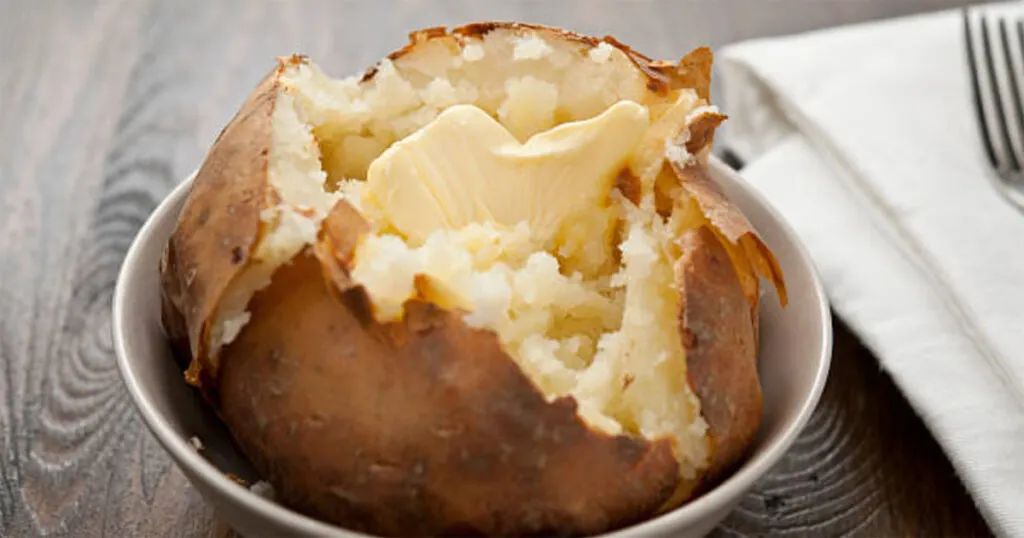
Baking or roasting white potatoes is a healthy way to prepare potatoes. Simply wash and slice the potatoes, toss them with a little avocado/olive oil or melted butter, and bake or roast them in the oven until they are tender. You can also add herbs, spices, or other seasonings to add flavor. Try: Cardnl’s savory salt!
Boiled
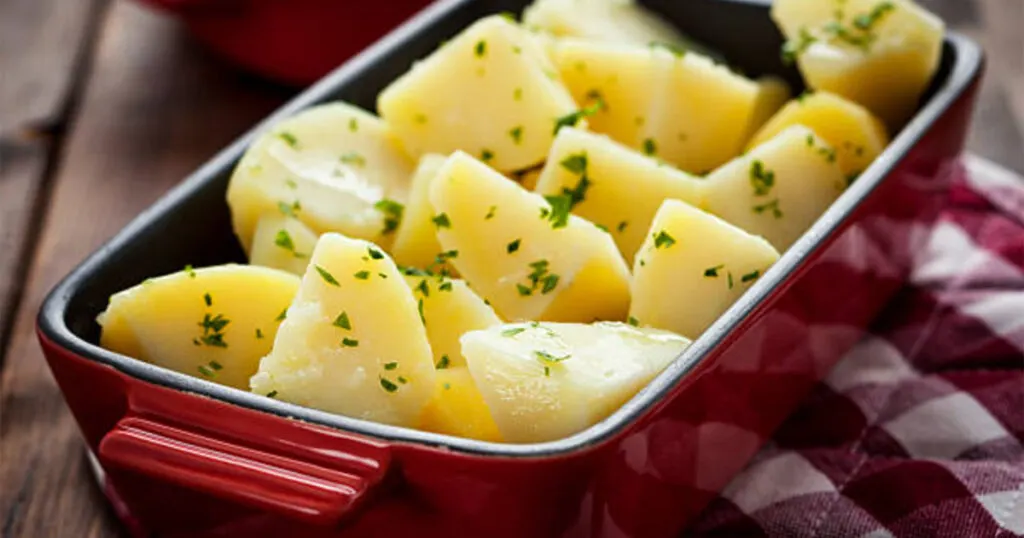
Boiling them is another healthy way to prepare them. Simply wash and chop the potatoes into bite-sized pieces, place them in a pot of boiling water, and cook until they are tender. You can then mash the potatoes or leave them whole, depending on your preference.
Grill
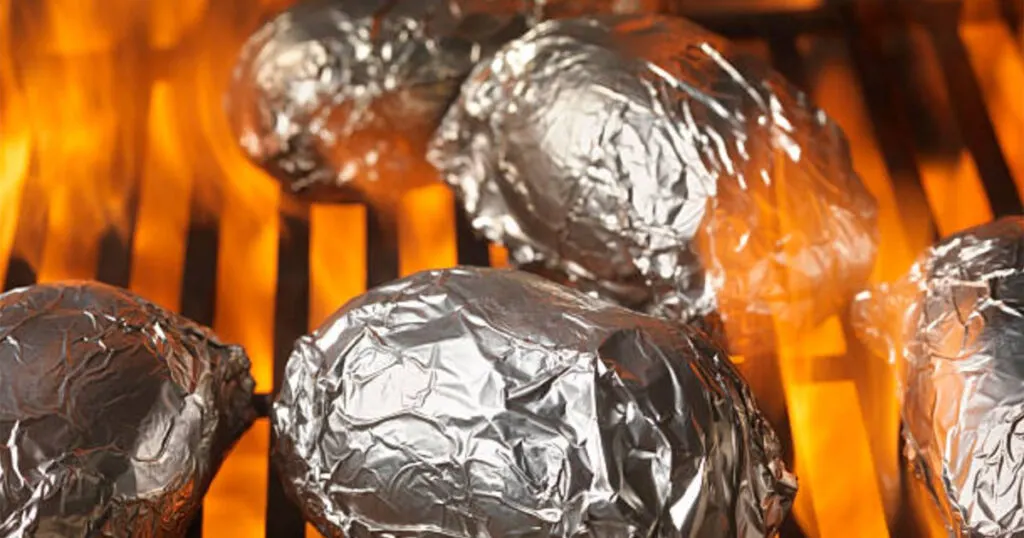
Grilling them is a fun way to prepare them. Simply wash and slice the potatoes, toss them with a little oil or melted butter, and grill them until they’re tender.
Mash
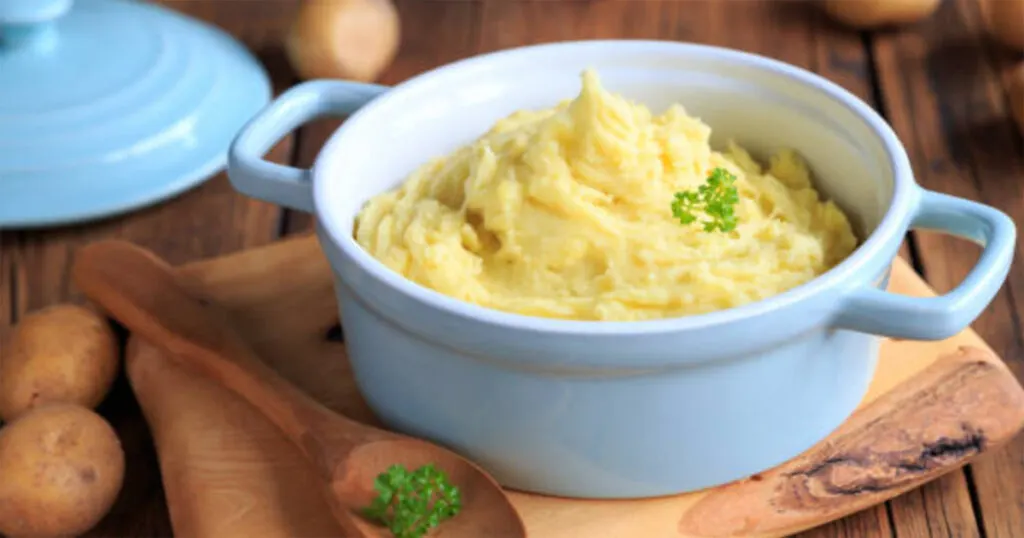
Mashing them is another option. Simply boil or roast the potatoes until they’re tender, then mash them with a little milk or butter until they are smooth.
Fried
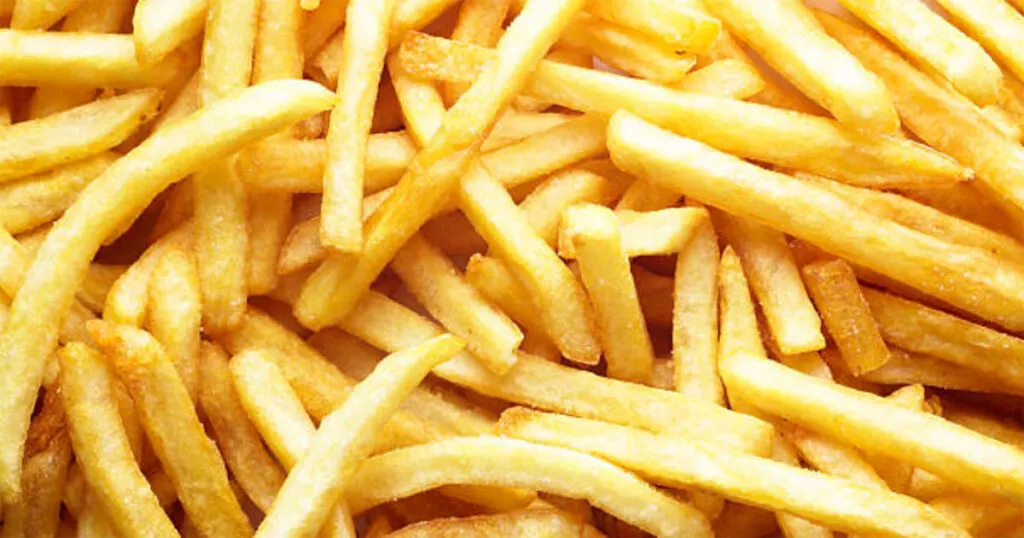
If you fry them in a healthy oil, it’s an absolutely tasty way to prepare them. Note: this method adds calories. Go with: coconut oil, avocado oil, or a high quality olive oil. Cut them thin and make potato chips!
We love making french fries at home. We know what oil is being used and we really love the taste! I tend to always eat homemade french fries with beef. I love beef.
What is the Role of White Potatoes in Digestive Health?
They contain a type of fiber called resistant starch, which is not fully digested in the small intestine. Instead, it passes into the colon, where it is fermented by beneficial bacteria. This fermentation process helps to support the growth of healthy gut bacteria, which are important for a strong immune system and overall health.
In addition to resistant starch, they also contain a small amount of soluble fiber, which helps to bulk up the stools and makes them easier to pass through the intestines. This can help to prevent constipation and other digestive problems.They are also low in fat and contain no sugar, which can help to reduce the risk of digestive problems, such as acid reflux and heartburn.
Are sweet potatoes Paleo-Friendly?
Yes, a type of root vegetable that is often included in the paleo diet because they are high in nutrients and are not highly processed. They are an excellent source of vitamins A and C, potassium, and fiber. Some people who follow the paleo diet include them as a staple in their diet, while others may limit their consumption due to their high carbohydrate content. Ultimately, whether or not you include them in your paleo diet is up to you and should depend on your individual nutritional needs and goals.
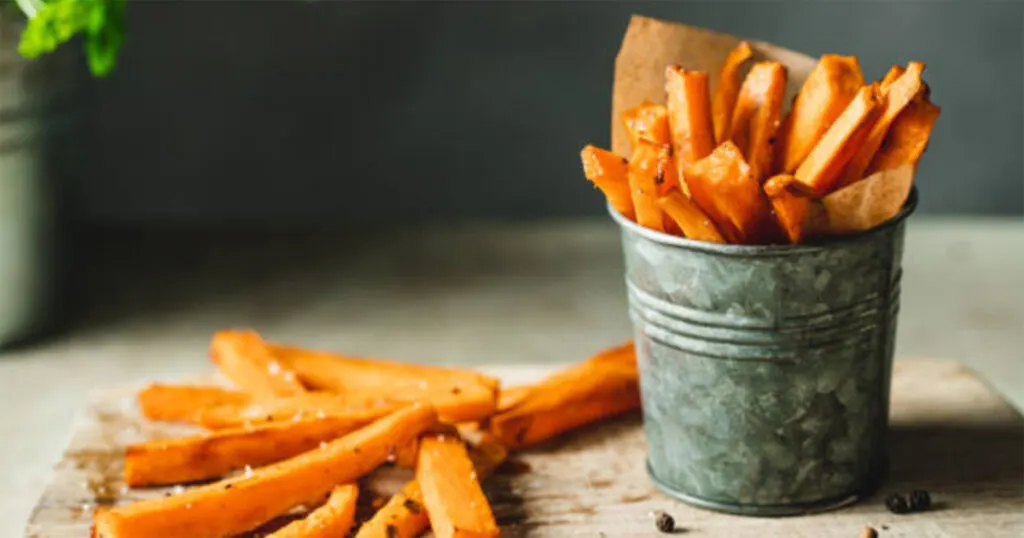
Do sweet potatoes or white potatoes contain more fiber?
They generally contain more fiber than white potatoes. One medium sweet potato contains about 4 grams of fiber, while one medium white potato contains about 2.5 grams of fiber.
Both are good sources of fiber. It’s important to note that the amount of fiber in a potato can vary depending on the size of the potato and how it is prepared. To get the most fiber from potatoes, try to choose larger potatoes and eat them with the skin on whenever possible.
Where are sweet potatoes on the glycemic index?
They’re generally considered to be a lower(ish)-glycemic-index food, with a GI of 54-70. This means that they are absorbed and digested a little more slowly than some other high-glycemic-index foods, such as white bread or white rice, and may cause a slightly slower rise in BS levels.
The (GI) of a food can vary depending on several factors, including the size of the potato, how it is cooked, and what it is eaten with. For example, a small, boiled sweet potato with the skin left on may have a lower (GI) than a large, baked sweet potato with the skin removed.
If you are trying to improve insulin sensitivity or are following a low-glycemic-index diet, don’t make them a staple in the diet. And if you’re trying to keep your BS levels low but still want to eat one: EAT PROTEIN FIRST.
What are the health benefits?
A nutritious and tasty root vegetable that is packed with a wide range of health benefits.
- High in vitamins and minerals: an excellent source of vitamins A and C, potassium, and manganese. They are also a good source of several other important vitamins and minerals, including vitamin B6, iron, and copper.
- High in fiber: a good source of fiber, which is important for maintaining a healthy digestive system and preventing constipation.
- May help to lower blood sugar levels: low on the glycemic index (GI), which means that they do not cause a rapid rise in blood sugar levels after eating. This makes them a good choice for people with diabetes or at risk for diabetes.
- May have anti-inflammatory properties: contain compounds called carotenoids, which may have anti-inflammatory properties. Inflammation is a normal immune response, but chronic inflammation has been linked to a range of health problems, including heart disease, cancer, and diabetes.
- May support weight management: low in calories and high in fiber, which can make them a good choice for people who are trying to lose weight or maintain a healthy weight.
Overall, they’re a nutritious and tasty addition to any diet and are a good source of several important nutrients. They can be baked, boiled, mashed, or roasted, and can be added to a variety of dishes, such as stews, soups, and casseroles.
What are tubers?
An underground storage organs that are produced by certain types of plants. They are used by the plant as a source of energy and nutrients during times of stress, such as during periods of drought or when the plant is not getting enough sunlight.
They’re typically round or elongated in shape and can vary in size from a few inches to several feet in length. They are often swollen with starch or other nutrients, which helps to sustain the plant during times of stress.
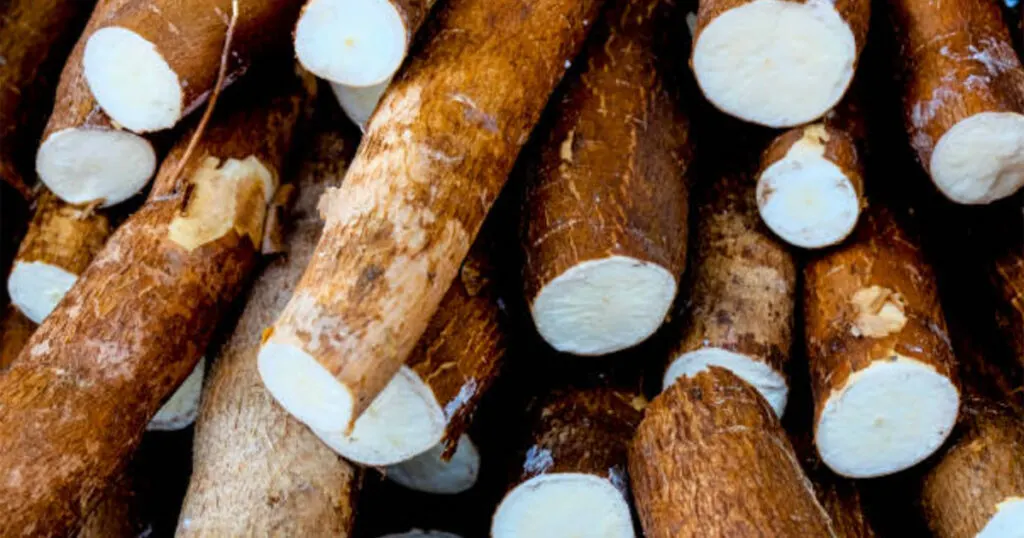
Some common types include potatoes, sweet potatoes, yams, and cassava. These are widely consumed as food and are an important source of nutrients and energy for people all over the world.Other plants that produce tubers include dahlias, irises, and some species of orchids. These are not typically consumed as food, but are used as ornamental plants in gardens and landscaping.
What’s the difference between yams and sweet potatoes?
Both are often confused because they are similar in appearance and are both root vegetables that are often used in similar dishes. However, they are actually two different types of vegetables that belong to different plant families.
Here are some key differences:
- Appearance: Yams are typically larger and have a more irregular shape. They have a dark brown or black skin and a white, yellow, or purple flesh. Sweet potatoes, on the other hand, have a thin, smooth skin that can range in color from yellow to orange to purple. They have a moist, orange flesh.
- Nutritional content: They have different nutritional profiles. Yams are lower in nutrients and are not as good a source of vitamins and minerals. Sweet potatoes are an excellent source of vitamins A and C, potassium, and fiber, while yams are a good source of potassium and a small amount of vitamin C.
- Culinary uses: both can be used in similar ways in the kitchen, but they do have some differences in taste and texture. Yams are drier and are often used in savory dishes, while sweet potatoes are sweeter and moister and are often used in sweet dishes.
Overall, they’re both different types of vegetables that have some similarities but also some key differences. If you are trying to decide which one to use in a recipe, consider the specific nutritional content and flavor profile of each type of vegetable to choose the one that best meets your needs.
What is cassava?
Cassava is a tropical root vegetable that is native to South America and is widely grown in tropical and subtropical regions around the world. It is an important source of food and income for millions of people in developing countries.
Cassava is a starchy, tuberous root. It has a brown, rough skin and a white, yellow, or purple flesh. The root is typically long and narrow and can grow up to several feet in length.
Cassava is an excellent source of carbohydrates and is a staple food in many parts of the world. It is often eaten boiled, mashed, or ground into flour and is used in a variety of dishes, such as porridges, breads, and pastries.
Cassava is also a good source of several important nutrients, including vitamin C, calcium, and potassium. However, it is important to note that cassava contains a type of toxin called cyanogenic glucosides, which can cause illness if the root is not properly prepared. To reduce the risk of illness, it is important to properly cook and store cassava.
Is cassava paleo?
Cassava is a type of root vegetable that is often included in the paleo diet because it is high in nutrients and is when processed correctly is a great option for flour in baking desserts. However, it is technically not considered to be a traditional paleo food because it wasn’t widely available to paleolithic humans and because it contains a type of toxin called cyanogenic glucosides, which can cause illness if the root is not properly prepared.
Are potatoes a nightshade?
Yes, potatoes are a type of nightshade vegetable; a group of plants that belong to the Solanaceae family and include a wide variety of vegetables, fruits, and herbs. Commonly included are: tomatoes, peppers, eggplants, and potatoes.
Nightshades are known for their toxic alkaloids, which are compounds that can be harmful to humans in high amounts. However, most are safe to eat in moderation and are an important source of nutrients and flavor in many cuisines around the world.
Some people may be sensitive and may experience symptoms such as digestive problems or joint pain after consuming them. If you’re sensitive, you may want to avoid or limit your intake and look into the Low FODMAP diet.
Are potatoes a legume?
No, legumes are a type of plant that belongs to the Fabaceae family and includes a wide variety of beans, peas, lentils, and peanuts.
Potatoes, on the other hand, are a type of root vegetable that belongs to the Solanaceae family.
Pin it:
